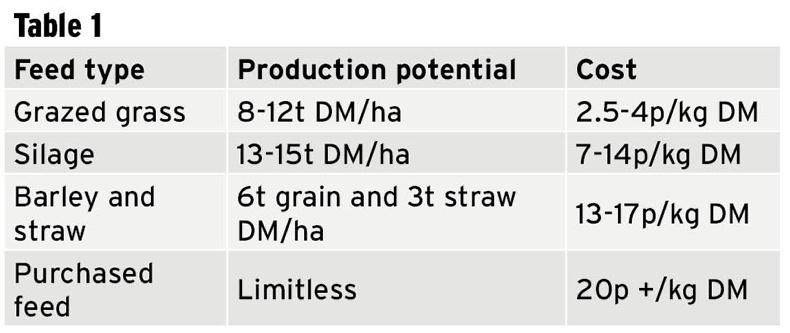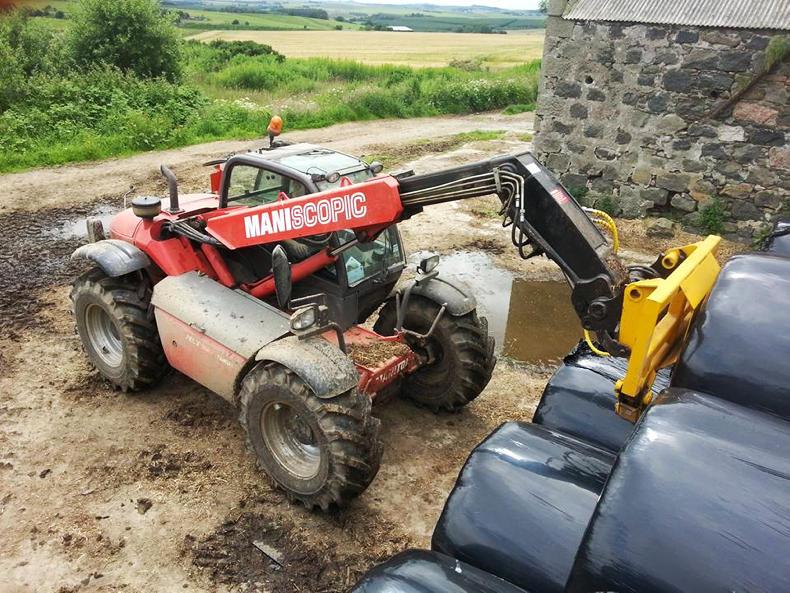With feed accounting for around three-quarters of variable costs on the project farms, reducing this will go a long way toward reaching the gross margin targets set out previously.
Andrew and Matthew Biffen see grazed grass as the cornerstone of this: “While we are reducing cost through the grazing season, we also have to keep an eye on the other half of the year. When our cattle are housed, we use quite a lot of grass silage for the autumn cows and the weaned calves. By improving the feed value of the silage, we will keep up the performance and reduce the cost for winter.”
Table one shows the dry matter cost and production potential of a range of feeds on farm.

Using the numbers above, grass silage is the next feed to use. Good-quality grass silage has the potential to support decent levels of weight gain in youngstock. However, bulky, later cut silages are not able to support this potential and either concentrates are required to support a good level of liveweight gain, or weight targets will be missed.
In 2016, silages at Mains of Arnage were bulky, with a lower feed value, as can be seen from table two below, showing the three samples that were taken.

To achieve 1kg/day from these silages, one would need around 3.5kg of barley to be added to the ration – a cost increase of 15p/head/day over feeding silage alone. Cutting earlier in the year and earlier in the growth curve (just as the grass is heading), will ensure there is more energy and less fibre in the grass. Improving ME to 11MJ would see 1kg/day from the silage alone.
In order to cut silage earlier, fertiliser was applied in late March. Generally, grass will use around 2.5kg of nitrogen per day when growing, so with the 100kg of nitrogen applied, the first cut should take place by mid-May. A similar level of nitrogen will be applied after the first cut of silage is off and the second cut is planned for early to mid-July. After this is off, the field may be grazed, or if there is a need for more silage, a third cut will be considered. P and K is being applied across the season at the rate of offtake.
“As the dry cows spend most of the winter on ammonia straw, we won’t have to dilute the silage down to control their condition. With the good-quality silage, we will maintain daily liveweight gains and reduce our feed costs.”






 This is a subscriber-only article
This is a subscriber-only article












SHARING OPTIONS: